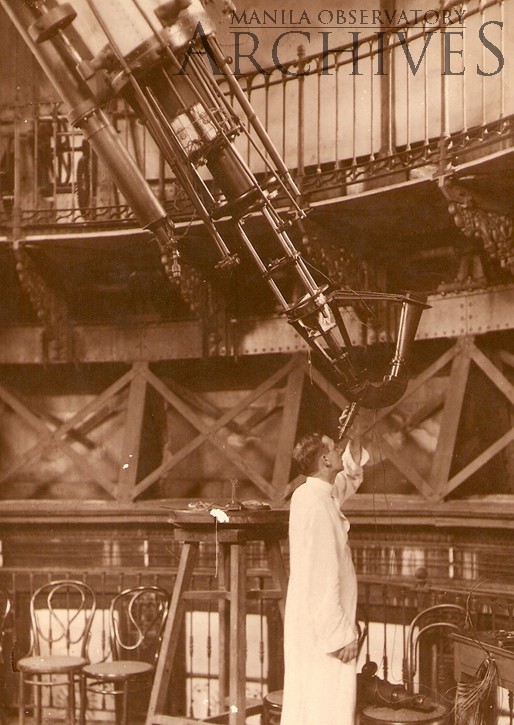A. What is Sidereal Time?
In his book, Light Cavalry, Fr. Horacio de la Costa, SJ described Manila Observatory’s time-keeping service in the 1930’s–a service which dates even before the year 1900:
The government supplies the Observatory with personnel, equipment, and special telegraphic facilities to answer two main questions: “What is the correct time?” and “Where is the typhoon?” The government hasn’t caught the Observatory napping yet. The correct time is, of course, of prime importance in any part of the world. It is of special importance to the Navy, the postal service and the railroad, all of which have direct telegraphic connections with the secret and mysterious chamber where Father Welch keeps the clocks of the Philippines in tune with the eternal stars. When Norman Reyes, the pleasant-voiced announcer of station KZRM, tells you that “the long signal will indicate exactly eight o’clock in the evening,” you can be sure that it is accurate to within three one-hundredths of a second; or at least was that accurate the signal flashed from the Observatory. You may think that is pushing accuracy a bit too far, but that is the tradition which has won the Manila Observatory the international rating of an A-1 Time Station. (Horacio de la Costa, Light Cavalry)
From this excerpt we notice that the Observatory uses sidereal time:
An astronomical time scale that is based on the Earth’s rate of rotation measured relative to the fixed stars. Thus a sidereal day is the time interval during which the Earth completes one rotation on its axis and some chosen star appears to transit twice consecutively on the observer’s local meridian. Because the Earth moves in its orbit about the Sun, a mean solar day is about 4 minutes longer than a sidereal day. Thus, a given star appears to rise 4 minutes earlier each night, relative to solar time, and different stars are visible at different times of the year. (NIST)
In this article, we shall discuss the physics behind the measurement of sidereal time, so that we can understand how the Jesuits of the Observatory measured time for Manila and the whole Philippines.

